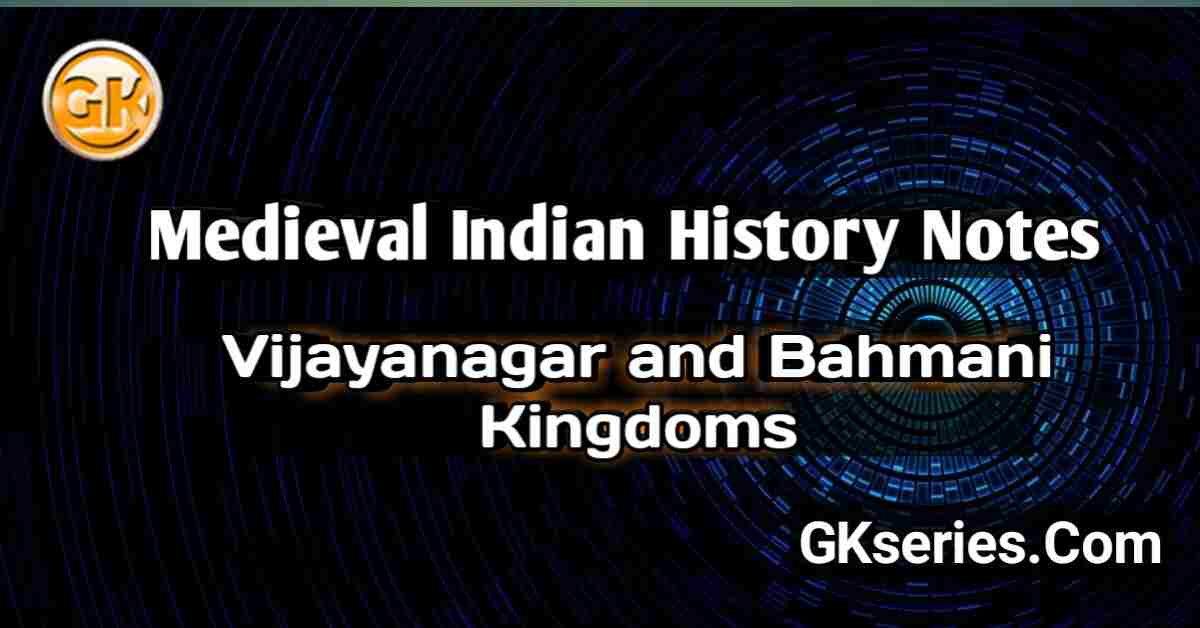
The Vijayanagar Empire was founded in 1336 by Harihara and Bukka of the Sangama dynasty, who were serving the Kakatiya ruler of Warangal, Prataparudra II.
In 1323, the Muslim conquest of Kakatiya kingdom led the brothers go to kingdom of Kampili and they became the ministers there.
Then they went to Kampili where they were imprisoned and converted to Islam. Later, they returned to the Hindu fold at the initiative of the saint Vidyaranya.
They also proclaimed their independence and founded a new city on the south bank of the Tungabhadra river. It was called Vijayanagar meaning city of victory.
The decline of the Hoysala kingdom enabled Harihara and Bukka to expand their newly founded kingdom.
Vijayanagar Empire comprised the whole of South India up to Rameswaram. The conflict between Vijayanagar Empire and the Bahmani kingdom lasted for many years.
The dispute over Raichur Doab, the region between the rivers Krishna and Tungabhadra and also over the fertile areas of Krishna Godavari delta led to this long drawn conflict. The greatest ruler of the Sangama dynasty was Deva Raya II.
The next dynasty, Saluva dynasty founded by Saluva Narasimha reigned only for a brief period (1486-1509)
Krishna Deva Raya (1509 — 1530)
Krishna Deva Raya’s first task was to repulse the Bahmani forces which invaded his territory on their annual raid into the Raya kingdom. The Muslim armies were decisively defeated in the battle of Diwani. The Muslim armies were decisively defeated in the battle of Diwani by Krishna Deva Raya.
Krishna Deva Raya invaded the Raichur doab and took the Raichur fort. Victory over the Bijapuri kingdom earned him the title of Yavana rajya sthapanacharya’. He extended the empire upto Kanyakumari including certain parts of Srilanka.
He defeated the Gajapathi ruler Prataparudra and conquered the whole of Telungana. He maintained friendly relations with the Portuguese
Albuquerque sent his ambassadors to Krishna Deva Raya. Though a Vaishnavaite, he respected all religions. He was a great patron of literature and art and he was known as Andhra Bhoja. Eight eminent scholars known as Ashtadiggajas were at his royal court.
Allasani Peddanna was the greatest and he was called Andhrakavita Pitamaga. His important works include Manucharitam and Harikathasaram
Krishna Deva Raya himself authored a Telugu work, Amukthamalyadha and Sanskrit works, Jambavati Kalyanam and Ushaparinayam.
He also built the famous Vittalaswamy and Hazara Ramaswamy temples at Vijayanagar. He also built a new city called Nagalapuram in memory of his queen Nagaladevi.
During the reign of Rama Raya, the combined forces of Bljapur, Ahmadnagar, Golkonda and Bidar defeated him at the Battle of Talaikotta in 1565. This battle is also known as Raksasa Thangadi.
Rama Raya was imprisoned and executed. The city of Vijayanagar was destroyed. This battle was generally considered to mark the end of the Vijayanagar Empire.
However, the Vijayanagar kingdom existed under the Aravidu dynasty for about another century. The last ruler of Vijayanagar kingdom was Sri Ranga III.

